Are you interested in exploring the world of long range FPV and trying to decide between DJI systems and analog?
In this article, we will provide an in-depth overview of each system and compare its pros and cons in terms of range, penetration, and video clarity.
We will share our opinion based on extensive research and analysis of the two systems. Additionally, we will provide some tips for flying long range FPV, including equipment recommendations, antenna usage, and flying techniques. By the end of this article, you will have a better understanding of which system is right for you and feel confident in your ability to fly long range FPV.
Key Takeaways
- Analog FPV is the clear winner for reliability in long range FPV.
- When flying long range, it’s important to fly higher as you go and position yourself in a high location.
- Use a 6S 8,000 mAh pack and low KV motors for long range flights.
DJI Systems Vs Analog
When it comes to long range FPV, a common question is whether to use DJI systems or analog. DJI systems offer digital clarity and a great view within a nominal range of 5-10 miles. However, in terms of reliability and range, analog is the clear winner.
Analog FPV systems can go out further than DJI FPV systems, and it’s important to note that flying long range FPV requires experience and knowledge of how to fly. It’s recommended to start with a great video system, such as UHF antennas, which work great for long range up to 10-20 miles. The rule of thumb is that your video will go out before your signal goes out on your aircraft (if you use the right receiver), so it’s important to be aware of your video quality and turn around when it starts to get fuzzy.
If you want to fly longer distances, it’s recommended to use a higher frequency such as 1.3 GHz or 2.4 GHz. However, it’s important to note that if you’re flying with a friend, make sure they’re not flying on the same frequency. Additionally, it’s important to fly higher as you go to account for the curvature of the Earth.
For control link, Crossfire on 915 MHz is the go-to choice, and it’s recommended to not fly further than you’re willing to hike out and retrieve your quad. It’s also important to test your GPS and return-to-home functionality before venturing out further.
When it comes to batteries, a 6S 8,000 mAh pack is recommended for fixed-wing or quadcopters, and it’s important to use low KV motors for less amp draw and more flight time. It’s also recommended to not fly with a GoPro for long-range flights, as the goal is to maximize distance out and back.
Analog FPV System
If you’re looking for a reliable and cost-effective way to fly long-range FPV, then analog systems are the way to go. In this section, we’ll take a closer look at the features, pros and cons, and price of analog FPV systems.
Features
Analog FPV systems use radio waves to transmit video signals from the drone to the ground station. They typically operate on frequencies between 5.8GHz and 1.3GHz, which allows for a longer range and better penetration through obstacles. Analog systems also have lower latency, which means that the video feed is more responsive and easier to fly with.
Pros & Cons
One of the biggest advantages of analog FPV systems is their cost-effectiveness. Compared to digital systems like DJI, analog systems are much cheaper and easier to set up. They also have a simpler design, which makes them more reliable and easier to repair in case of a crash. But for long range you should go for the high-end hardware and don’t save at the wrong end.
However, analog systems do have some drawbacks. One of the biggest is the lack of digital clarity. Analog video feeds are prone to interference and noise, which can make it difficult to see details in the video feed. They also don’t have the clarity and resolution like digital in a shorter range.
Price
Analog FPV systems are much cheaper than digital systems like DJI. A basic analog setup can cost as little as $100, while a high-end system can cost up to $500. The cost of an analog system will depend on the quality of the components you choose, such as the camera, transmitter, and receiver.
Overall, analog FPV systems are a great choice for anyone looking to fly long-range FPV on a budget. While they may not have the same level of clarity as digital systems, they are much cheaper and easier to set up. If you’re just starting out with long-range FPV, then an analog system is a great place to start.
DJI FPV System
If you’re considering the DJI FPV system for long range flying, there are a few things to keep in mind. Here are some features, pros and cons, and price information to help you make an informed decision.
Features
The DJI FPV system offers a high-quality digital video feed with low latency, which can make flying easier and more enjoyable. It also has a range of up to 10 kilometers, which is impressive for a digital system. But this will only be archived with optimal conditions and special antennas. The goggles have a 150-degree field of view and can record video in 4K.
Pros & Cons
One advantage of the DJI system is its ease of use. It’s a plug-and-play system, so you don’t need to spend a lot of time tinkering with settings to get it to work. The digital video feed is also less prone to interference than an analog system, which can be a big advantage in some situations.
However, the DJI system does have some downsides. One is its price – it’s significantly more expensive than most analog systems. The system also requires a lot of power, which can be a challenge if you’re trying to fly for a long time. Finally, the range of the DJI system can be limited in certain situations, such as when flying in areas with a lot of interference.
And there is the sudden cut-off of the picture quality. While in analog there is a steady decline in the picture quality, in digital it gets a bit worse with distance and then is lost completely and suddenly. This behavior is not ideal for long range.
Price
The DJI FPV system is a premium product, and it comes with a premium price tag. The basic system, which includes the goggles, air unit, and remote controller, costs around $1,000. You’ll also need to purchase a battery and charger separately, which can add another $200 or so to the cost. If you want to add a second set of goggles, that will cost you another $550 or so.
Overall, the DJI FPV system is a high-quality product with some impressive features. However, its high price and power requirements may make it less appealing for some long-range flyers. Also, tuning the system for long range is not as easy as with analog hardware. If you’re looking for a more affordable and flexible option, an analog system may be a better choice.
Choosing Between DJI and Analog for Long Range
When it comes to long range FPV, one of the most important decisions you will make is choosing the right system. There are two main options to consider: DJI FPV and analog. In this article, we will provide a brief overview of each system and help you make an informed decision.
If you prioritize digital clarity and the best view while flying at a nominal range, then DJI FPV might be the right choice for you. However, if you want a reliable system that can go further than DJI FPV, then analog is the clear winner. In fact, in years of testing, analog has consistently outperformed DJI FPV in terms of range, penetration, and clarity of video.
It’s important to note that flying long range FPV requires skill and experience. You need to know how to fly long range and have a great video system set up. Analog FPV systems, such as UHF antennas, work great for long range up to 10 to 20 miles. However, your video will likely go out before your signal does, so you need to be aware of the distance of your analog FPV system.
If you’re flying long range, it’s crucial to position yourself correctly. The golden rule of long range FPV is to fly higher as you go. This is because of the curvature of the earth, which can affect your signal path. Additionally, you should be running RSSI up at the top of your screen so you can see your signal link quality back to your quad and ground station. It’s also essential to run GPS and field test it before venturing out.
When it comes to control link, Crossfire on 915 megahertz is a popular choice for long range quads. However, it’s important to note that at any given moment during your flight, something can and will go wrong, so it’s crucial to expect to fail.
Also don’t forget to turn around or do 360 turns in between the flight! This is because the orientation of your drone can have a huge impact on the video signal quality. So the turns in between are there to check if the signal for coming back is good enough.
How to Fly Long Range FPV Basics
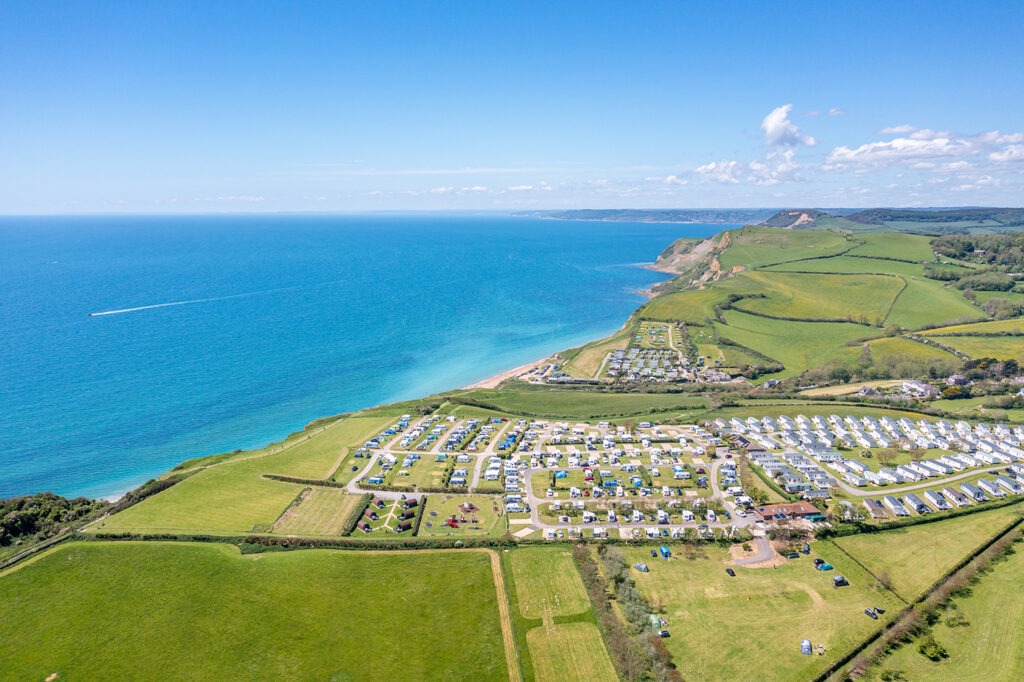
Long-range FPV (First Person View) is a type of drone flying that involves flying your drone beyond the range of your sight. It requires a good video system that can transmit a clear video signal over long distances. In this article, we’ll explore the different types of long-range FPV systems and which one might be better for you.
There are two main types of long-range FPV systems: DJI FPV and analog FPV. DJI FPV is a digital system that offers great clarity and a good view while flying at a nominal range. However, it has a limited range and may not be reliable for long-range flights. On the other hand, analog FPV can go much further than DJI FPV and is more reliable for long-range flights.
To fly long-range FPV, you need to have a good video system and know how to fly long-range. The rule of thumb is that your video will go out before your signal goes out on your aircraft. You should also fly higher as you go to compensate for the curvature of the earth.
When choosing a control link for your long-range quad, Crossfire on 915 megahertz is a go-to option. You should also use a 6S 8,000 mAh pack from GepRC or the iFlight Full Send battery for your long-range flight.
In conclusion, long-range FPV requires a good video system and knowledge of how to fly long-range. While DJI FPV offers great clarity, analog FPV is more reliable for long-range flights. Use Crossfire on 915 megahertz for your control link and a 6S 8,000 mAh pack for your long-range quad.
Use of Antennas
When it comes to long range FPV, the right antennas can make all the difference. There are various types of antennas available, each with its own advantages and disadvantages. In this section, we’ll discuss some of the most common types of antennas used in long range FPV and their benefits.
Directional Antennas
Directional antennas are designed to transmit and receive signals in a specific direction. Directional antennas are ideal for long range flights because they have a high gain, which means they can transmit signals over a longer distance. Some of the most popular directional antennas used in long range FPV include:
- Yagi Antennas
- Patch Antennas
- Helical Antennas
Directional Antennas should, like the name implies, point into the direction of your drone. So in most cases, it makes sense to use a tripod or stand to fix the position and direction of your antenna, instead of mounting it to your goggles.
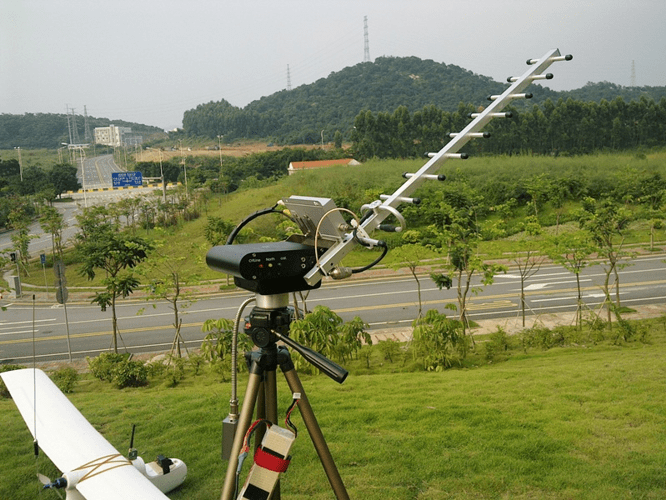
Omni-Directional Antennas
Omni-directional antennas are designed to transmit and receive signals in all directions. These antennas are ideal for shorter range flights because they have a lower gain, which means they can transmit signals over a shorter distance. Some of the most popular omni-directional antennas used in long range FPV include:
- Dipole Antennas
- Cloverleaf Antennas
- Pagoda Antennas
These are not for long-range, but they can be found as the secondary antenna for close-up actions like landing or flying behind the scope of the directional antennas we talked about above.
Diversity Antennas
Diversity antennas are designed to improve the quality of the signal by using two or more antennas. These antennas sometimes even switch between antennas depending on which one has the best signal quality. This ensures that you always have a strong and reliable signal, even when flying at long distances. Some of the most popular diversity antennas used in long range FPV include:
- Crosshair Antennas
- Pepperbox Antennas
- Helix Antennas
In conclusion, choosing the right antennas is crucial for long range FPV. Directional antennas are ideal for long range flights, while omni-directional antennas are better for shorter range flights. Diversity antennas are ideal for improving the quality of the signal.
Digital Clarity Vs Range
When it comes to long-range FPV, one of the biggest questions is whether to choose DJI systems or analog. The decision ultimately comes down to two factors: digital clarity and range.
DJI FPV systems offer unparalleled digital clarity, providing the best view while flying within a nominal range of 5 to 10 miles. However, when it comes to reliability in long-range FPV, analog is the clear winner. In fact, analog systems can go out further than DJI FPV systems, especially when flying beyond the nominal range.
It’s important to note that flying long-range FPV requires experience and knowledge. One should start with a great video system and understand the limitations of their analog FPV system. The rule of thumb is that video will go out before the signal goes out on the aircraft. Therefore, it’s essential to understand the range of the analog FPV system and to turn around when the video starts to get fuzzy.
When choosing an analog FPV system, the 1.3 GHz system is an excellent option, providing good penetration and signal clarity. Alternatively, one can opt for a more compact system like 2.4 GHz, although it doesn’t offer the same level of penetration or signal clarity.
It’s important to position oneself correctly when going for a long-range flight. The golden rule of long-range FPV is to fly higher as you go because of the curvature of the earth. Additionally, finding a high location like a mountain to perch on and flying down into a valley provides a better signal path and line of sight back to the aircraft.
Preparation for Long Range Flight
Before embarking on a long range flight, it is important to properly prepare and equip yourself for the journey. Here are some tips and considerations to keep in mind:
Choosing the Right System
When it comes to long range FPV, the choice between DJI and analog systems can be a tough one. While DJI may offer superior clarity and range at nominal distances, analog systems have proven to be more reliable and capable of reaching further distances. Ultimately, the choice between the two will depend on your personal preferences and experience.
Video System Setup
To ensure clear and reliable video transmission during your flight, it is important to choose the right video system setup. Consider using UHF antennas for long range up to 10-20 miles, or 1.3GHz for even greater distances. A ground station setup with a pepper box and other types of antennas can also enhance your video transmission.
Location and Altitude
When selecting a location for your long range flight, it is important to choose an area with high altitude and minimal obstacles that could interfere with your signal. Fly higher as you go to account for the curvature of the earth, and avoid flying down into valleys that could disrupt your signal.
Control Link and Battery
For your control link, Crossfire on 915MHz is a reliable option for long range flights. Choose a battery with at least 6S and 8000mAh capacity from reputable brands like GepRC or iFlight Full Send. Avoid using a GoPro during your flight as it can add unnecessary weight and reduce your flight time.
Expect the Unexpected
Long range flights can be unpredictable, and it is important to be prepared for any potential issues that may arise. Always run RSSI and GPS, and field test your return to home feature before venturing out. Expect to fail and do not attempt to fly further than you are willing to hike out to retrieve your quad.
Check the legal Situation
Always check the laws in your country. It can be necessary to get special permissions to do long range flights.
Safety Measures and Precautions
When it comes to long range FPV, safety should always be a top priority. Here are some safety measures and precautions that you should take before attempting a long range flight:
Check Your Equipment
Before you even think about taking off, it’s important to make sure that all of your equipment is in good working order. Check your batteries, motors, and electronics to ensure that everything is functioning properly. Make sure that your GPS and return-to-home features are working as they should.
Choose the Right Location
When it comes to long range flying, location is key. Choose a location that is open and free from obstacles. Avoid flying in urban areas or near airports. Always make sure that you have a clear line of sight for your aircraft.
Fly at High Altitudes
As you fly further away from your location, the curvature of the earth can start to affect your signal. To combat this, it’s important to fly at higher altitudes. This will give you a better line of sight to your aircraft and help to maintain a strong signal.
Be Prepared for Emergencies
No matter how well-prepared you are, emergencies can still happen. Make sure that you have a plan in place for what to do if you lose signal or your aircraft malfunctions. Always keep a close eye on your battery levels and be prepared to land if necessary.
Use the Right Equipment
When it comes to long range flying, using the right equipment is crucial. Make sure that you are using a reliable analog FPV system and a control link like Crossfire on 915 megahertz. Use low KV motors to conserve battery life, and choose a battery with a high capacity to ensure that you have enough power for your flight.
Battery Recommendations
When it comes to long-range FPV, having the right battery is crucial. You want a battery that can provide enough power to keep your quadcopter in the air for an extended period of time, but you also want a battery that won’t weigh you down too much. In this section, we’ll take a look at some of the best battery options for long-range FPV.
For fixed-wing or quadcopter long-range flights, we recommend using a 6S 8000mAh battery pack from Gap RC or the iFlight Full Send battery. These batteries can add some weight to your quadcopter, but they provide enough power to keep your quadcopter in the air for up to 25-26 minutes.
It’s important to note that the weight of the battery can affect the performance of your quadcopter. If you’re planning on flying long-range, you want to make sure that your quadcopter is as light as possible. That’s why we recommend using a low KV motor, which reduces the amp draw and increases flight time.
When choosing a battery, it’s also important to consider the type of flying you’ll be doing. If you’re planning on flying long-range, you want a battery that can handle the distance. Make sure to test your battery before heading out on a long-range flight to ensure that it’s working properly.
Motor Recommendations
When it comes to long range FPV, choosing the right motors for your quadcopter is crucial. You want to make sure that your motors are efficient and can handle the added weight of a larger battery.
Low KV motors are recommended for long range flights, as they draw less amps and provide more flight time. For fixed-wing aircraft, 900 KV motors are a good choice, while for quadcopters, 1280 KV motors on 6S batteries work well.
It’s also important to consider the weight of your battery when selecting motors. A 4000 – 8000mAh battery is a good choice for long range flights, but it adds significant weight to your quadcopter. Make sure your motors can handle the added weight without sacrificing efficiency.
Additional Equipment Recommendations
When it comes to long-range FPV, having the right equipment is crucial. In addition to the video systems and control links, there are a few other pieces of equipment that can make your long-range flights safer and more enjoyable:
- One essential piece of equipment is a GPS tracker. This will allow you to locate your drone if it gets lost or crashes during a long-range flight. There are many GPS trackers available on the market, so be sure to do your research and choose one that is reliable and has a good range.
- Another important thing is the battery monitor. This will allow you to keep track of your battery life and ensure that you don’t run out of power during your flight. Activate it in your Flight Controller and set it up in the HUD. Best is if you can see all the LiPo cells separately.
- If you’re flying in areas with a lot of interference or obstacles, you may also want to consider using a signal booster. This can help improve the range and clarity of your video and control signals, allowing you to fly further and with more confidence.
- Finally, it’s always a good idea to have a backup plan in case something goes wrong during your flight. This could include bringing extra batteries, spare parts, or even a second drone. By being prepared and having the right equipment, you can ensure that your long-range FPV flights are safe, enjoyable, and successful.
How does the HDZero compare to other long range FPV systems?
When it comes to long range FPV systems, the HDZero stands out for its versatility and high definition video feed. However, it’s important to compare it to other systems on the market to determine if it’s the best fit for your needs. Here are some comparisons between the HDZero and other popular long range FPV systems:
HDZero vs DJI Digital FPV System
The DJI Digital FPV System is a popular choice for long range flying due to its low latency and high-quality video feed. However, the HDZero offers some advantages over the DJI system, such as:
- Versatility: The HDZero offers a variety of VTXs to suit different flying styles and needs, including a low latency VTX for racing, a high output VTX for long range and freestyle, and a tiny VTX for small drones.
- Interference: The HDZero is less prone to interference than the DJI system, which can be a major advantage in areas with a lot of wireless signals.
- Price: While the HDZero is still a premium system, it is generally more affordable than the DJI Digital FPV System.
HDZero vs Analog FPV System
Analog FPV systems have been the standard for many years, and they still have some advantages over digital systems. However, the HDZero offers some key benefits over analog systems, such as:
- High definition video: The HDZero offers a much higher definition video feed than analog systems, which can be a major advantage when flying long range or in challenging environments.
- Interference: Analog systems are more prone to interference than digital systems, which can be a major disadvantage in areas with a lot of wireless signals.
- Range: While analog systems can still offer good range, the HDZero’s digital system is generally more reliable and can offer better range in challenging environments.
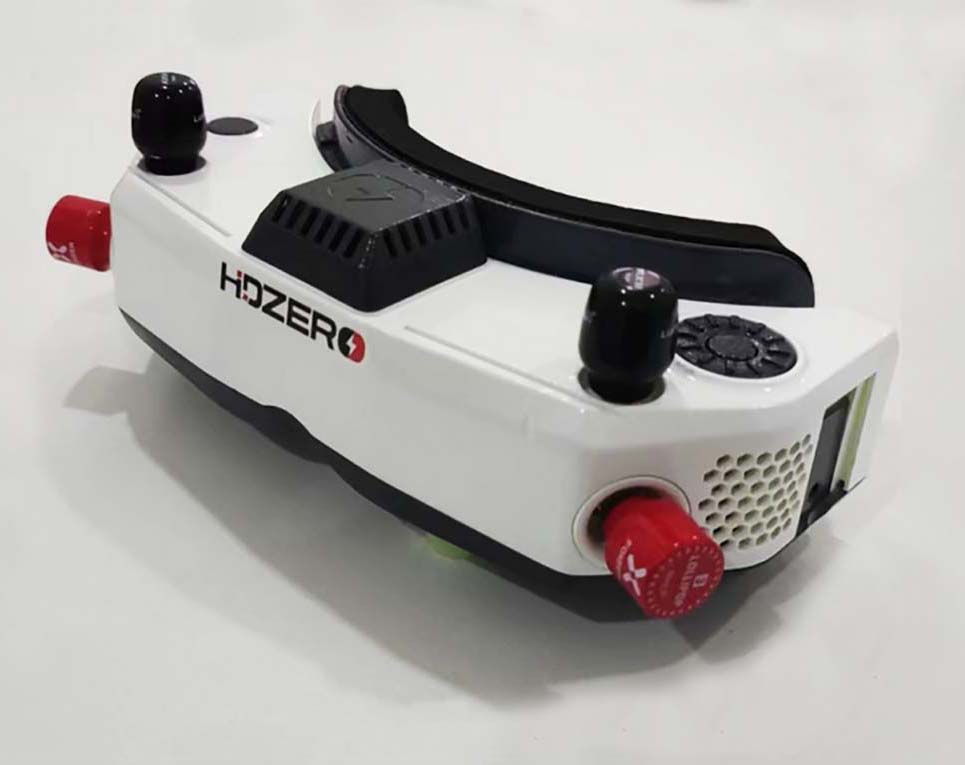
Conclusion
In conclusion, when it comes to long-range FPV, the choice between DJI systems and analog comes down to personal preference and experience. While DJI systems offer digital clarity and a great view at nominal ranges, they can fall short when it comes to reliability and range penetration. On the other hand, analog systems have been tried and tested for years, and can go out further than DJI FPV systems.
It’s important to note that long range FPV requires a certain level of skill and experience, and it’s crucial to know how to fly long-range FPV before attempting it. The golden rule of long range FPV is to fly higher out as you go and to position yourself at a high point before flying into a valley for a better signal path and operation line of sight.
When choosing a control link for your long range quad, Crossfire on 915 MHz is the go-to, and it’s recommended to use a 6S 8000mAh pack for fixed-wing or quadcopters. It’s also important to have a functional GPS and RSSI, and to expect failures during the flight.
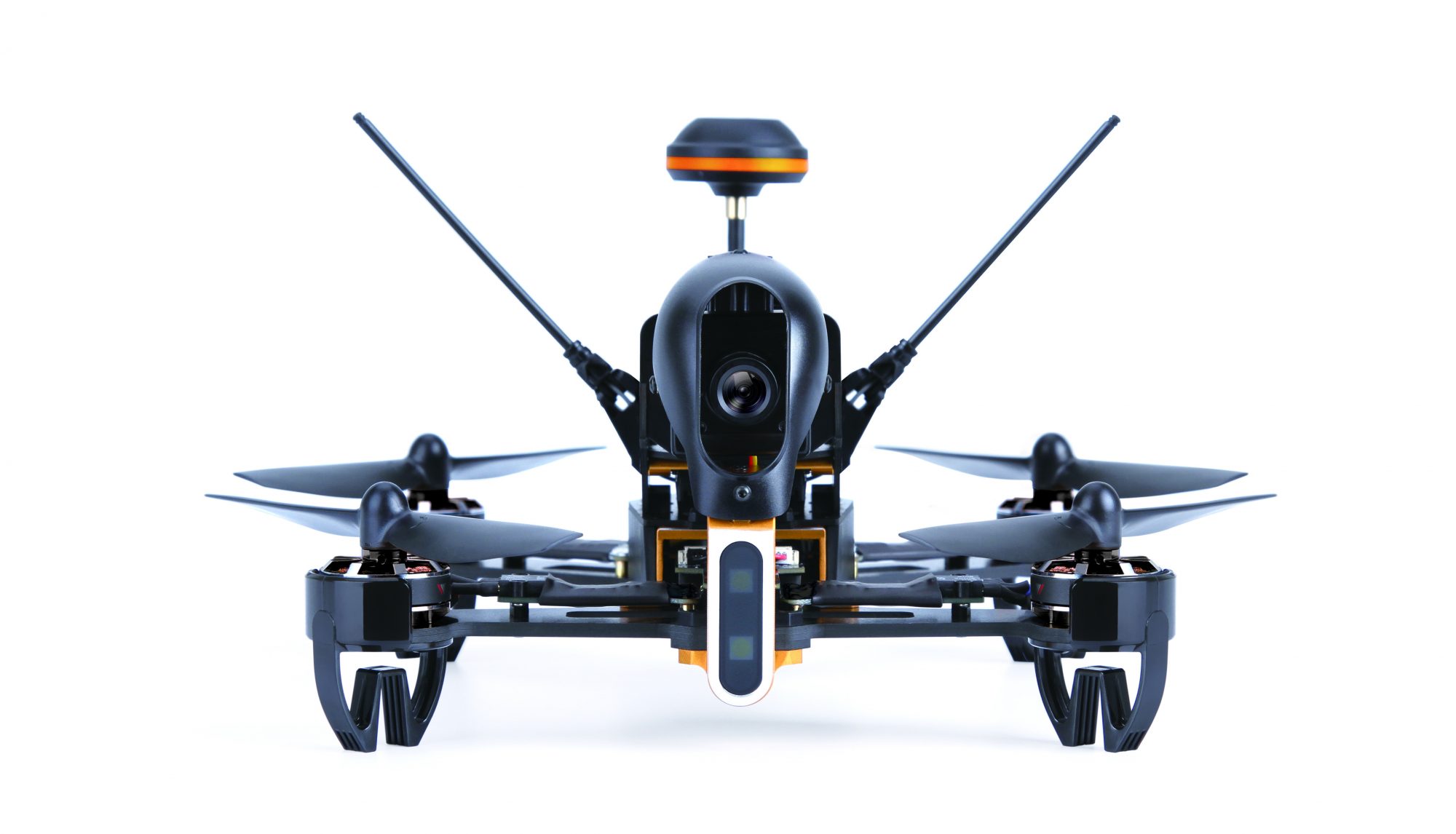
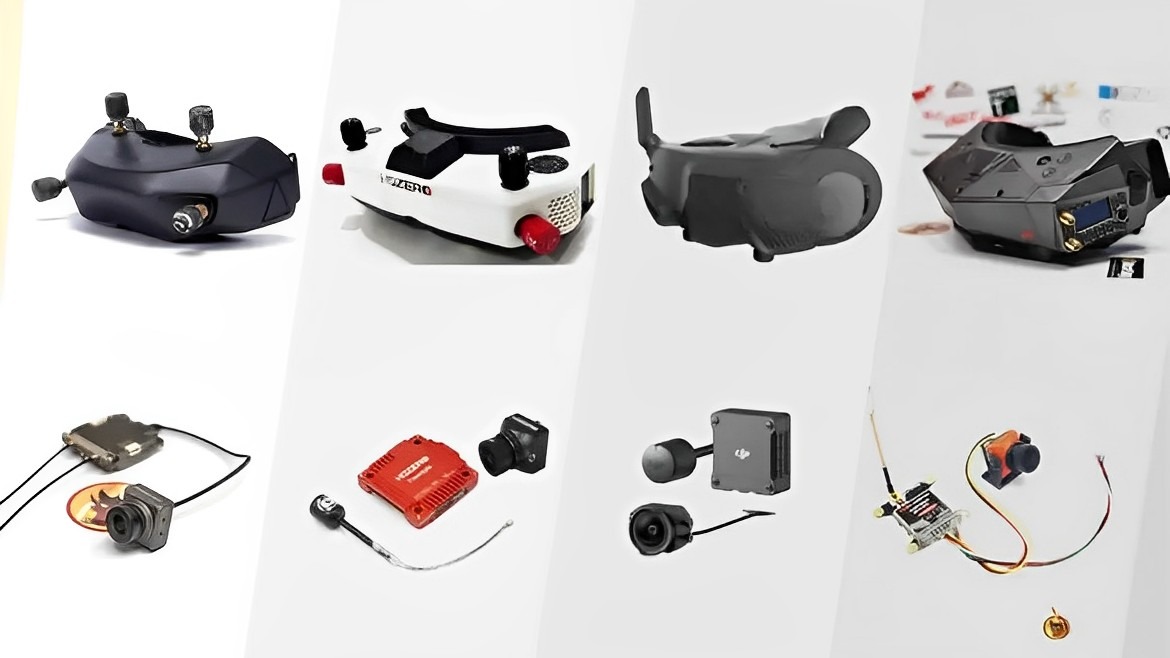
2 Replies to “Long Range FPV: DJI System vs. Analog – Making the Choice”